University of Akron biomedical engineering students collaborate with Akron Children’s to develop innovative device for pediatric patients
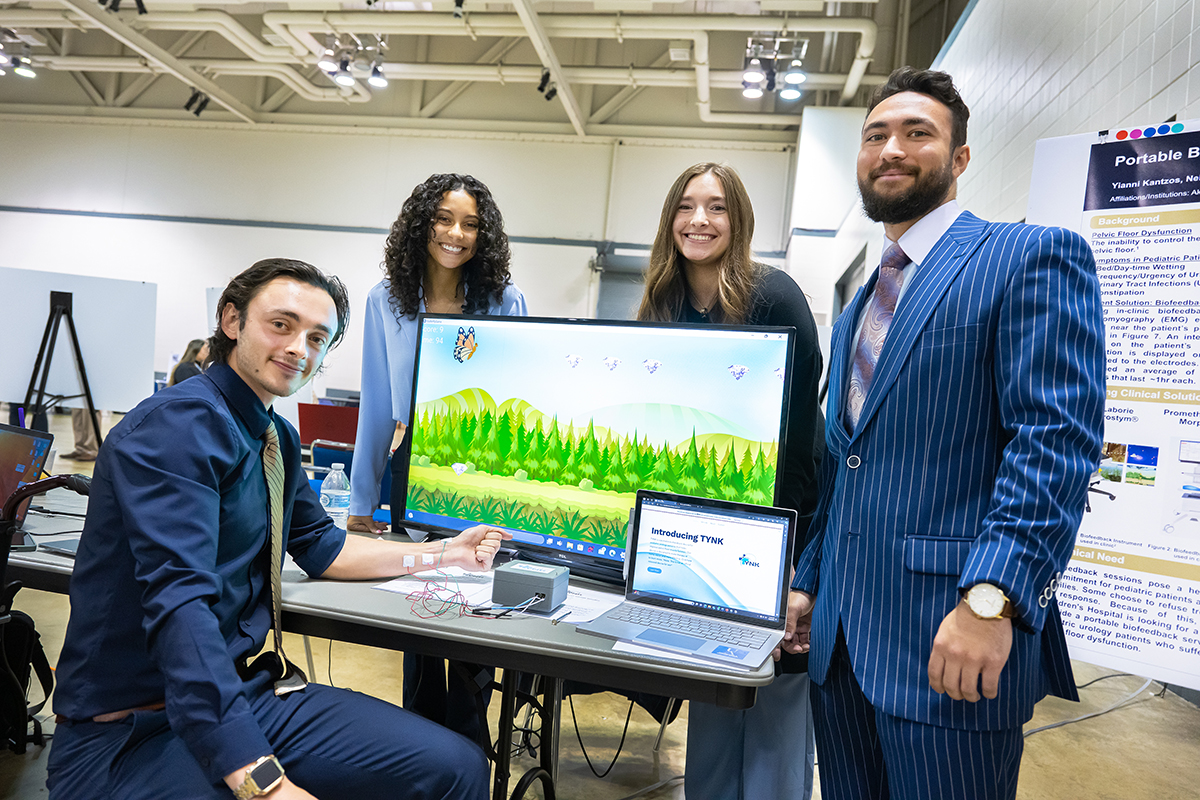
Students recently shared their project at Senior Design Day held at the John S. Knight Center on April 16. Senior Design Day highlights graduating seniors from the College of Engineering and Polymer Science as they present their team design projects built on five years of fundamentals learned in class and experiential learning opportunities such as co-op, design teams and undergraduate research.
Students majoring in biomedical engineering at The University of Akron (UA) have partnered with Dr. Hannah Agard Bachtel, a pediatric urologist at Akron Children’s Hospital, to create a novel, home-use device aimed at assisting pediatric patients suffering from Pelvic Floor Dysfunction. This collaboration represents a significant step forward in addressing the symptoms associated with this condition, including bed/daytime wetting, frequent urination and UTIs.
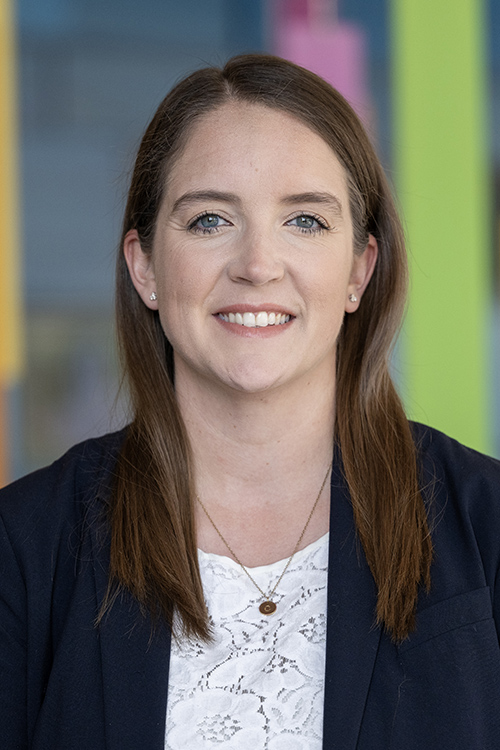
Dr. Hannah Agard Bachtel
Pelvic Floor Dysfunction occurs when patients are unable to completely empty their bladder due to the inability to relax pelvic floor muscles. The disorder affects approximately one in seven school-aged children. And although in-office therapies exist, Dr. Bachtel recognized the need for an at-home solution that can be used between office sessions to help patients practice the techniques used to retrain these muscles to relax fully during urination. Biofeedback, a treatment method proven effective for children with these issues, is taught in the office using a device which provides visual feedback on muscle engagement and relaxation. The gamified biofeedback device allows patients to practice the techniques while connected to sensors which interact with the game, showing their progress.
The problems begin when patients leave the office and must attempt to do the exercises at home with no feedback letting them know if they are doing them correctly. No take home device currently exists.
"Proper practice is critical to recovery and we want them to be able to practice at home in a way that provides the same visual feedback," said Bachtel. "We see patients from all over the state, and traveling for office visits can also be challenging. If they could benefit from home treatment, it could also potentially cut down on the number of visits needed as well as help us to reach even more patients."
In response to this need, four UA biomedical engineering students, Yianni Kantzos of North Canton, Ohio, Neil Mazzone of Strongsville, Ohio, Keridan Morgan of Norton, Ohio and Taylor Shark of Stow, Ohio, took on the challenge as a capstone project for their senior year. Under the guidance of Dr. Justin J. Baker, associate professor of practice, they developed a prototype that meets engineering requirements and is lightweight, portable, safe and engaging for children. The device provides visual feedback via a simulated game, mirroring the experience patients have in the clinic.
"This collaboration exemplifies the innovative spirit of our biomedical engineering students," said Baker. "They have worked diligently to create a device that not only meets medical needs but also enhances the patient experience."
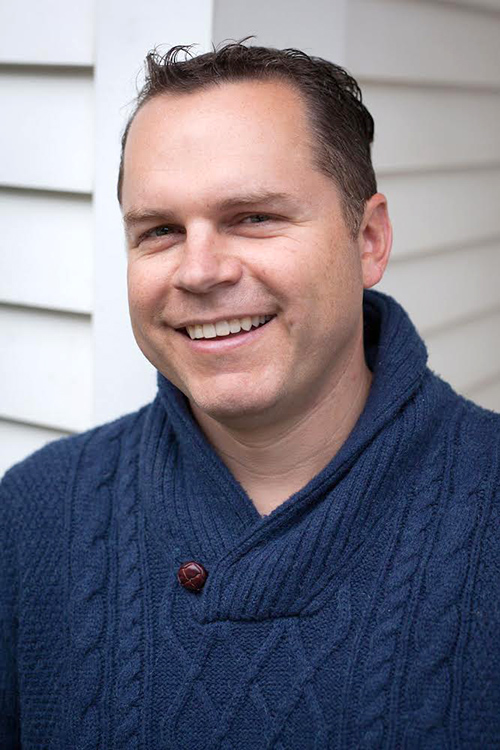
Dr. Justin J. Baker
The students undertook the design as part of a capstone project. While they had many options to explore, this one sparked their interest the most.
The multi-step project required that students follow the Food and Drug Administration waterfall design process which involves a user need stage to see what the customer needs and requires; a design input stage where customer requirements are converted to engineering requirements; a design process stage to brainstorm and think of solutions; the design output stage where the device design is documented, and the final medical device stage where the device or prototype is completely developed. In the final stages, verification and validation testing ensures that the device was built right and that the design matches what the customer wants.
"The students developed a nice, compact device that patients can hook on their belt and connect with the game via Bluetooth," said Baker. "The best part is that the students have provided Dr. Bachtel with an actual prototype device that is useful. And although they are not actively using the device on patients yet, once it is validated, they will proceed with testing and further development. The team hopes to then submit their work for further funding from organizations such as the National Institutes of Health DEBUT student design competition."
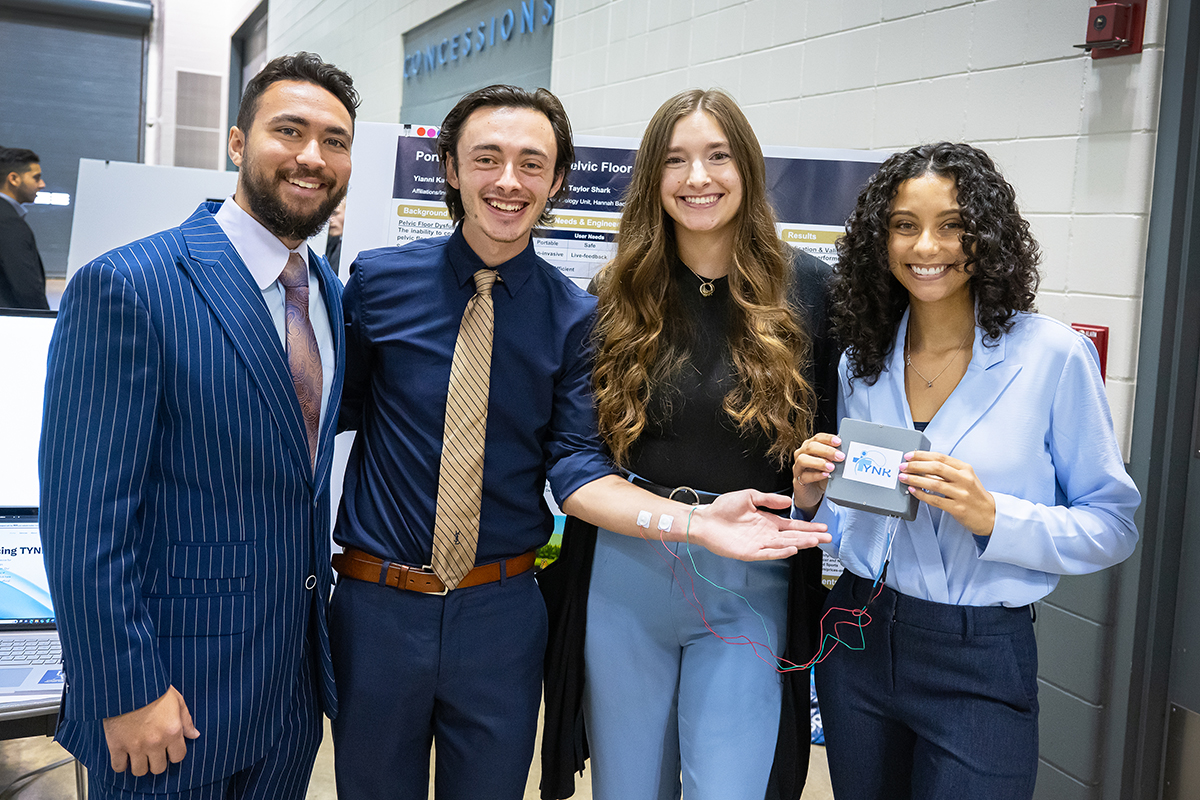
Pictured left to right are biomedical engineering students Yianni Kantzos, Neil Mazzone, Taylor Shark and Keridan Morgan.
Bachtel, who has previously collaborated with engineering schools in Houston, including Texas A & M and Rice University, plans to continue working with students to address unmet needs in pediatric device development. "This group of students has been incredibly professional and organized throughout this project. Their dedication and timely communication have been instrumental in moving this project forward."
"This project was a challenging and rewarding journey, marked by continuous learning, adaptation and a lot of research," said Mazzone. "The process of iterating on our designs, troubleshooting issues and ultimately achieving a functional prototype was awesome."
"Being able to work with Akron Children's Hospital was a great experience and something our whole team was very excited about," said Shark. "We knew this project had the potential to impact people's lives because of the importance of what they currently do in the clinic. Being able to observe sessions in the clinic was very helpful in understanding what we were trying to accomplish! It is very rewarding to know that all the work we put into the project could benefit the children and their families."
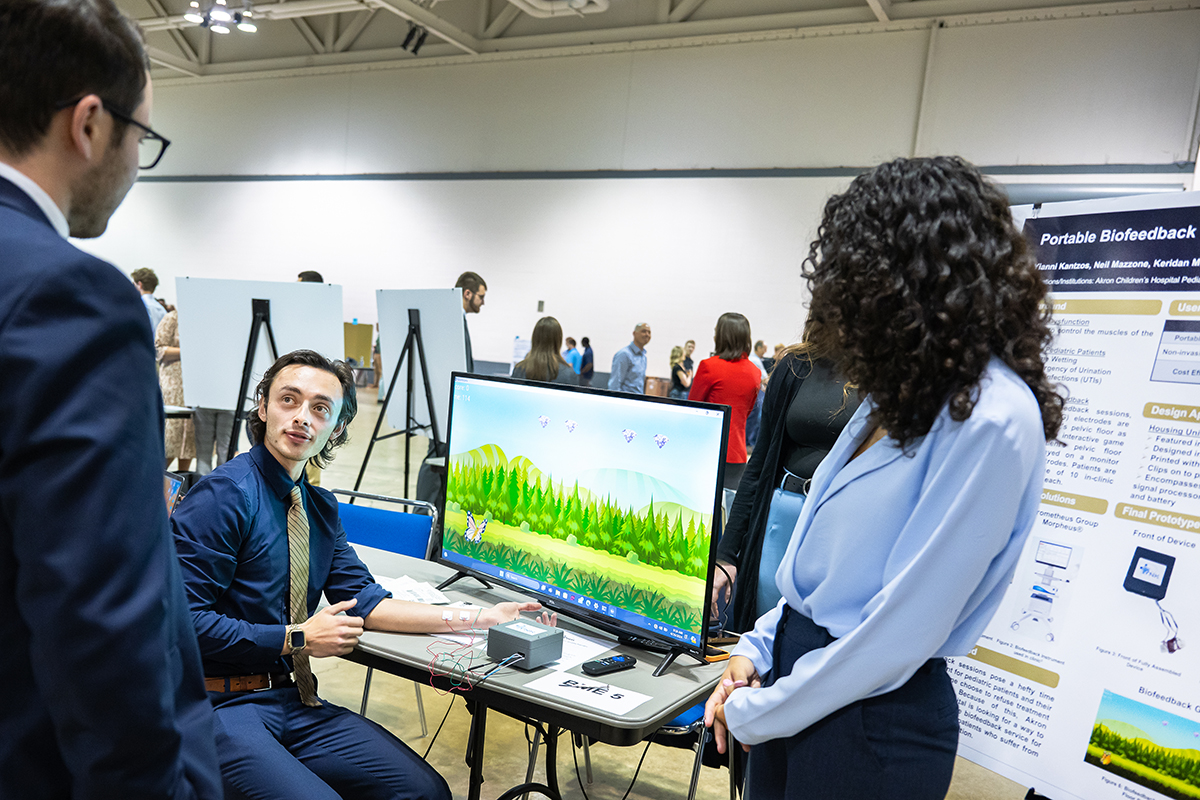
Ultimately, this collaboration underscores The University of Akron's commitment to interdisciplinary collaboration and innovation in addressing real-world health care challenges and is one of the many reasons students choose UA for biomedical engineering.
"I chose to study biomedical engineering at UA because it gave me the opportunity to combine my passion for engineering with my desire to make a meaningful difference in health care." said Kantzos.
Morgan agreed. "I decided to study biomedical engineering because I knew I wanted to have a direct impact on the well-being of people's lives through challenging and innovative devices. I love knowing that my work has purpose."
RELATED CONTENT:
- Learn more about Biomedical Engineering at UA.
- More news from the College of Engineering and Polymer Science.
Media contact: Cristine Boyd, 330-972-6476 or cboyd@uakron.edu.
